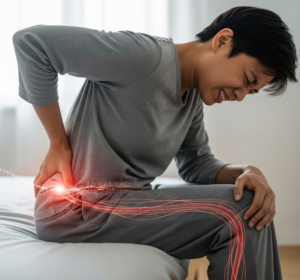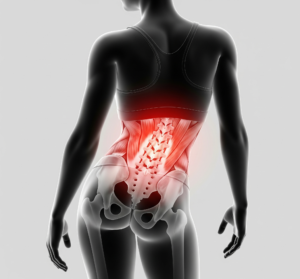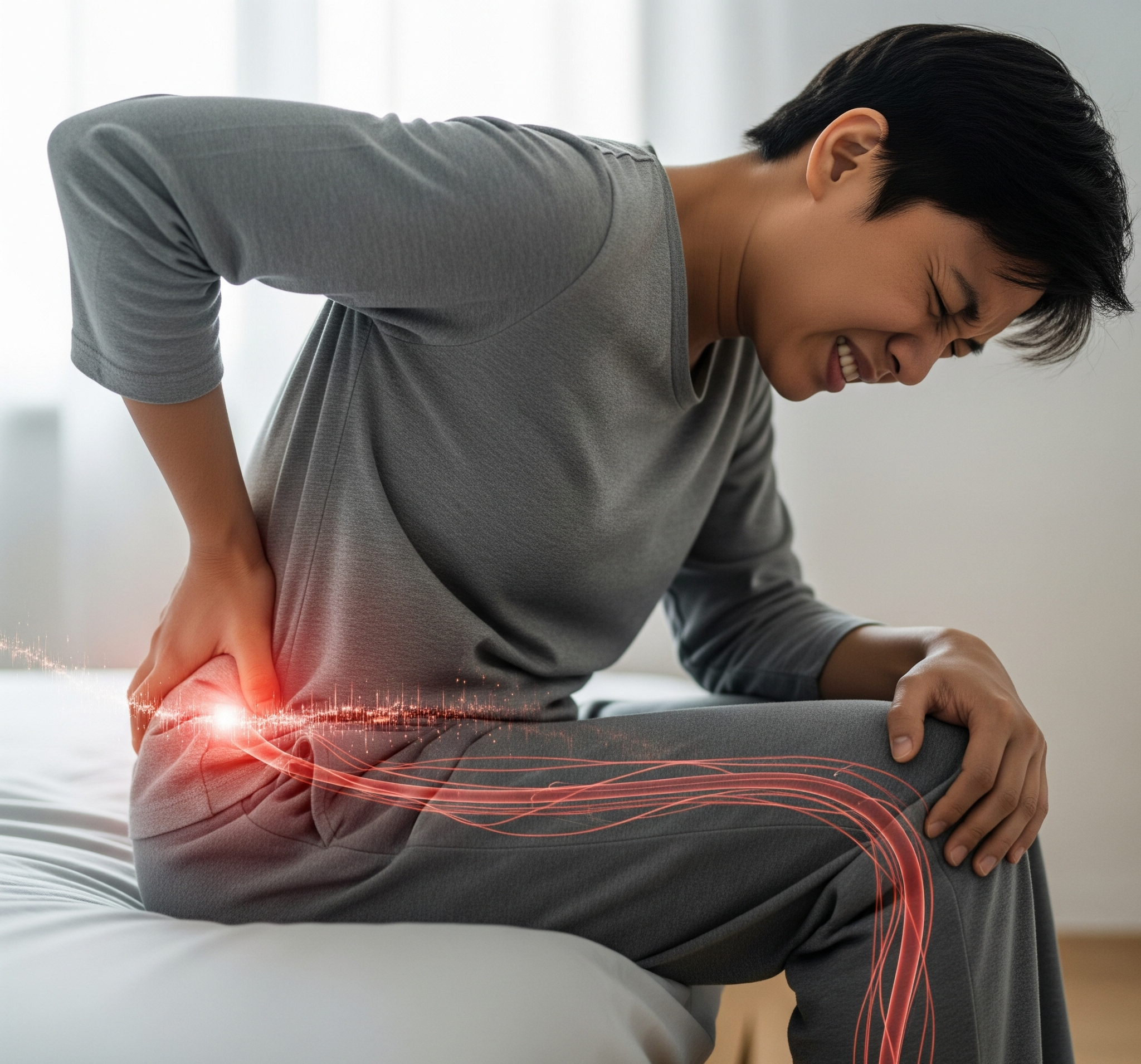If you’ve ever felt a deep ache in your hip that somehow travels down your thigh—or even all the way to your foot—you know how frustrating and limiting it can be. Simple daily actions like sitting comfortably, walking to the market, or climbing a flight of stairs can suddenly feel like a challenge.
What makes this kind of pain especially tricky is that the cause isn’t always where the pain is. While your leg might be screaming for attention, the actual problem often starts somewhere else—commonly in your lower back, hip joint, or the nerves that connect them. Understanding this “pain travel” is the first step toward real relief.
Why Pain Travels from Hip to Leg
Pain that follows this pathway is often the result of one of a few key issues:

1. Nerves Under Pressure
A large nerve—often the sciatic nerve—runs from your lower back through your hip and down your leg. If this nerve is irritated or “pinched,” it can send pain, tingling, or weakness all the way along its path. Causes include:
Arthritis in the spine
Tight muscles pressing on the nerve
2. Tight Muscles in the Hip Area
One small but powerful muscle, the piriformis, sits deep in your hip. When it becomes tight or goes into spasm, it can press directly on the sciatic nerve. This condition, known as piriformis syndrome, can mimic sciatica and send discomfort down your leg.
3. Joint Wear and Tear
Arthritis or a tear in the hip labrum (the ring of cartilage cushioning the joint) can cause stiffness and inflammation. This irritation often radiates into the thigh and sometimes further down.
4. Muscle Weakness or Imbalance
If some muscles are weak while others are overworked, your pelvis or spine can be pulled slightly out of alignment. Over time, this imbalance can irritate nerves and joints, triggering pain.

What It Usually Feels Like
People often describe this pain in a few distinct ways:
A sharp, shooting, or burning sensation running down the leg
Tingling or numbness in the thigh, calf, or foot
Weakness in the leg muscles
Discomfort that worsens after sitting for long periods, standing too long, or bending forward
If your symptoms last more than a few days—or are getting worse—it’s worth having a physiotherapist or doctor assess the root cause.
Fixing the Problem, Not Just the Pain
At Arunalaya Physiotherapy & Sports Rehab, we don’t just treat symptoms. Our focus is on understanding the exact source of your discomfort and designing a treatment plan that addresses it at its core.
Here’s how we do it:
1. Thorough Assessment
We start by evaluating your posture, movement patterns, and muscle balance. If needed, we may recommend imaging to get a clearer look at what’s going on.
2. Custom Exercise Programs
Gentle stretches and strengthening exercises are designed specifically for you to:
Improve mobility
Reduce nerve irritation
Restore healthy movement patterns
3. Hands-On Therapy
Techniques such as soft tissue release, joint mobilisation, and our advanced manual therapy (KKMT) help ease muscle tension, improve joint alignment, and restore pain-free movement.
4. Posture & Lifestyle Guidance
Small adjustments in your daily routine—like how you sit at work, the way you lift groceries, or how you stand—can make a big difference in preventing the pain from returning.
Gentle Stretches You Can Try at Home
(Only perform these if your physiotherapist approves)
Knee-to-Chest Stretch
Lie on your back and gently hug one knee toward your chest to stretch your lower back and hip.Figure 4 Stretch
Cross one ankle over the opposite knee, then gently lean forward to open up the hip.Seated Hamstring Stretch
Sit on a chair, straighten one leg forward, and lean gently until you feel a stretch in the back of your thigh.
These moves can help ease mild tightness and improve mobility, but they’re no substitute for a tailored rehab plan if your pain is persistent.
When to Seek Immediate Help
Certain symptoms require urgent medical attention:
Sudden, severe weakness in the leg
Loss of bladder or bowel control
Pain that’s rapidly worsening
These can be signs of a serious condition that needs prompt care.
Pain that starts in your hip and travels down your leg often signals something deeper—like nerve compression, joint irritation, or muscle imbalance. The good news? You don’t have to simply “wait it out” or rely on painkillers to get through the day.
With the right diagnosis and a customised treatment plan, relief is possible—and lasting recovery is within reach.
At Arunalaya Physiotherapy & Sports Rehab, led by Dr. Chakshu Bansal, Ph.D. (America) and a three-time world record holder in physiotherapy, we’ve helped thousands of people overcome this exact problem.
Call us today to book your consultation and take the first step toward moving comfortably again.
want to be physical therapist-check physioneeds academy



